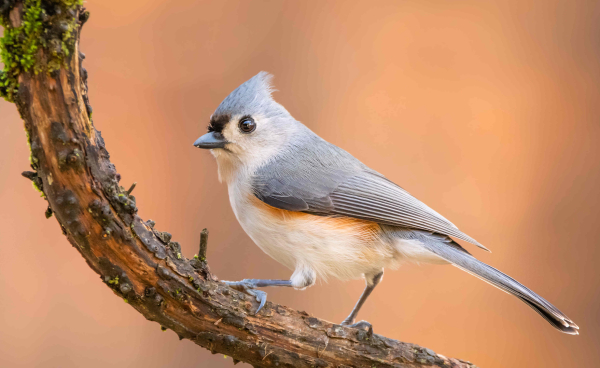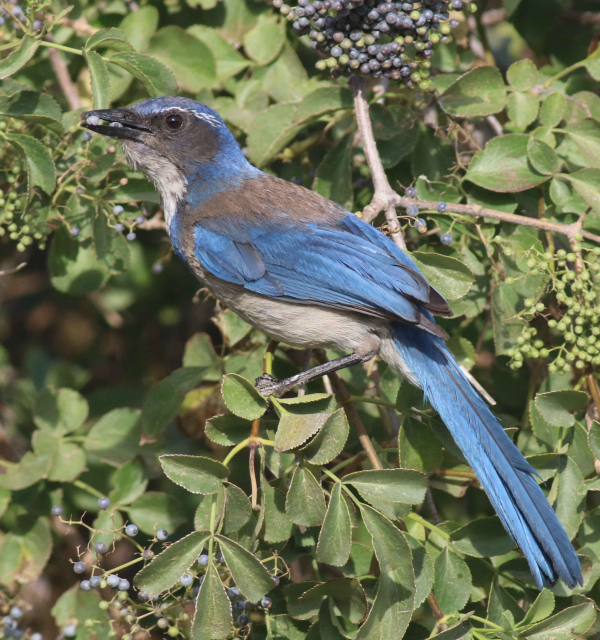
Titmice are frequent visitors to many feeding stations, but how much do you know about a Tufted Titmouse or similar species – the Bridled Titmouse, Oak Titmouse, Juniper Titmouse, or Black-crested Titmouse? (Tufted Titmouse photo by Jenny Burdette)

Are you aware of recent name changes for western scrubs jays? Learn more about California Scrub Jays at All About Birds, and better yet, Birds of the World (photo by Paul Konrad).
|
How much do you really know about the birds that visit your feeders? After the initial excitement of identifying a new bird at your feeding station, or in one of your trees, it’s a great practice to learn more about the birds that favor your yard. What do they eat during the summer? Where do they spend their summers? And for that matter, where are the birds that spend their summers in your neighborhood, visiting your feeders and water feature? Where do they spend the winter? It’s all part of being a better birder and getting the most out of your efforts to attract and benefit birds in your yard.
Today there are a number of authoritative and easy to use sources with a wealth of information about any species you encounter in your yard, as well as other areas you travel to while working, shopping, and recreating, as well as birds you observe during field trips. The best first-stop option is the All About Birds website at Online bird guide, bird ID help, life history, bird sounds from Cornell All About Birds
Produced by the Cornell Lab of Ornithology, you can expect accurate life history accounts and distribution maps, preferred foods, nesting preferences and information about a species’ nest, eggs, clutch size, incubation period, their nestling period to fledging, species behaviors, conservation status, tips on how to attract the species to your yard, and more.
The World of Birds
If you are ready for a little more information, the best source of information about birds, species by species, is “Birds of the World,” which is available at Birds of the World - Cornell Lab of Ornithology Overall, this remarkable website provides more information about a given species in all categories, but especially related to migrations, vocalizations, food procurement, nutrition and energetics, population information, systematics, photos, videos, and illustrations.
In addition, you can look at a given bird’s family – family as in a systematics family, such as the hummingbirds, woodpeckers, swallows, etc, worldwide, which is very insightful to be aware of and understand. The only catch to Birds of the World is that it requires a monthly or annual subscription, which is only $8 per month, less if you opt for an annual subscription. Our staff finds Birds of the World indispensable as well as informational at the highest level.
Whether you are interested in learning more about Northern Cardinals or Baltimore Orioles, Anna’s Hummingbirds or Varied Thrushes, Canada Jays or Carolina Chicadees, take a look at all the information about these interesting and attractive feeder visitors and backyard birds that spend some part of the year at your feeders, in your yard, or down the road; and for that matter, any time you see a new bird in your neighborhood, as you travel – or on television. By the way, how is your yard list progressing this winter season – and during this new year?
Share your backyard birding experiences and photos at editorstbw2@gmail.com